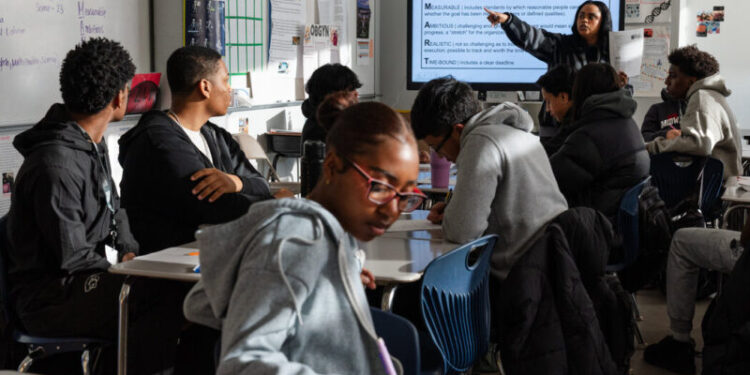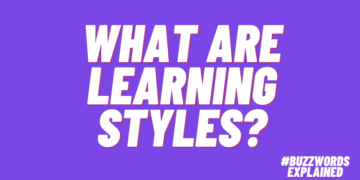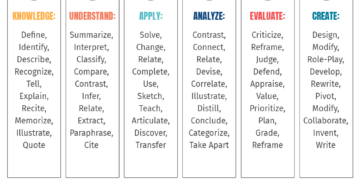Have you thought about what you will do after high school? Will you go to college or join the military? Will you attend a trade school to specialize in a field like cosmetology or mechanics? Will you take a gap year or start working?
Does your school encourage students to explore all of these options? Or does it primarily focus on urging students to apply to college?
What should schools do, in your opinion, to help students plan for their futures?
In “Why Some Schools Are Rethinking ‘College for All,’” Dana Goldstein writes about how some schools that once guided students toward a four-year degree are now offering more choices. The article begins:
For three decades, “college for all” was an American rallying cry. The goal inspired a generation of educators, offered a north star to students and united political figures from George W. Bush to Bernie Sanders.
Thousands of new K-12 schools were founded to achieve this ambitious vision, often focused on guiding low-income students toward bachelor’s degrees.
Even after decades of bipartisan effort and billions of dollars spent, about 40 percent of students who start college never finish, often leaving with life-altering debt. Across the political spectrum, higher education institutions are less respected and trusted by the public, whether because of sticker shock, perceived left-wing bias or doubts about their ability to prepare students for the job market.
In response, some high schools that once pushed nearly all students toward four-year colleges are now guiding teenagers toward a wider range of choices, including trade schools, apprenticeships, two-year degrees or the military.
Among them are schools that are part of KIPP, the nation’s largest charter school network.
For many years after KIPP’s founding in 1994, the network was known for its single-minded focus on getting low-income Black and Hispanic teenagers to and through four-year colleges.
“College starts in kindergarten” was a KIPP mantra. Classrooms were named after the colleges their teachers attended. On senior “signing days,” students proudly marched across auditorium stages, waving the banners of their future alma maters.
But over the past five years, KIPP has been part of a national rethinking of college for all.
KIPP is “broadening the celebration” of what students can do and achieve after high school, said Shavar Jeffries, chief executive of the KIPP Foundation, which supports 278 KIPP public schools across the country.
But, Ms. Goldstein writes, schools are trying to walk a fine line between encouraging students to strive for a four-year degree and introducing them to alternatives. She quotes Shavar Jeffries, chief executive of the KIPP Foundation, which supports 278 KIPP public schools across the United States:
“We have to be very, very careful, particularly for younger people of color,” Mr. Jeffries said, noting that many apprenticeship and job-training programs are expensive, and may not have a proven track record of placing students in well-paid jobs.
While KIPP is enthusiastic about directing students toward what Mr. Jeffries called “credible” job-training programs, “the data is clear,” he said. “A college degree opens up more opportunities.”
The article includes anecdotes that show how this move is affecting students’ plans for after they graduate from high school:
At KIPP Academy Lynn, in a working-class corner of coastal Massachusetts, almost all students still consider four-year colleges, and about three-quarters enroll. But now, the conversation does not end there.
In the fall of her senior year, Moriah Berry, 18, realized that her biggest fear, she said, was “being broke.”
To avoid that fate, Moriah has been working with her teachers and counselors to create plans — and backup plans — for life after she graduates from high school.
Her big goal is an undergraduate degree in biochemistry or physics. But Moriah is also considering an accelerated, three-year bachelor’s degree from a private trade school, which would qualify her to work as a radiology technician. And because the $56,000 annual tuition there could turn out to be prohibitive, even with aid, she is also looking at two-year programs that offer certification in the same field.
“I don’t want to have an outrageous amount of loans,” said Moriah, who lives with her mother, a nurse. “I want to be really realistic.”
Students, read the entire article and then tell us:
Does anything in the article remind you of your own experiences planning for life after high school? Do any of the concerns from students or teachers resonate with you? Why or why not?
Do you expect to go to college right after high school? Do your parents and teachers expect you to? What’s the motivation behind that decision?
Do you have a career in mind? If so, do you have a detailed plan for starting it? Who is giving you advice or helping you plan for it?
Do you think your school prepares all students for life after graduation? Are individuals’ needs, concerns and interests taken into consideration? Or do teachers and counselors tend to guide everyone toward the same path?
The author notes that, for various reasons, there is increasing doubt in the value of college. What do you think about that? Do you think that to have a fulfilling life, everyone should go to college? Or are there alternatives to explore?
Students 13 and older in the United States and Britain, and 16 and older elsewhere, are invited to comment. All comments are moderated by the Learning Network staff, but please keep in mind that once your comment is accepted, it will be made public and may appear in print.
Find more Student Opinion questions here. Teachers, check out this guide to learn how you can incorporate these prompts into your classroom.




















